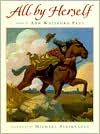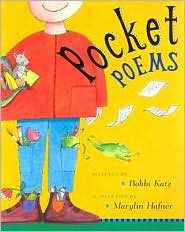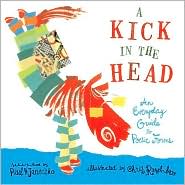 BIBLIOGRAPHY
BIBLIOGRAPHYGlenn, Mel. 1996.
Who Killed Mr. Chippendale?: A Mystery in Poems. NY: Lodestar Books. ISBN: 0525675302.
SUMMARYWhen the high school English teacher, Mr. Chippendale, is murder at the school’s track students and people whose lives he affected share their personal thoughts as the police and a guidance councilor figure out who is the murderer.
CRITICAL ANALYSISPresented in free-verse form, Mel Glenn’s mystery verse novel explores the aftermath of Mr. Chippendale’s murder. Instead emphasizing on the mystery, the intrigue, and the whodunit, Glenn focuses more on the emotional and personal impact that the unexpected and harsh death of the high school teacher caused.
English teacher Mr. Chippendale, or Mr. C. as some many students called him, was popular among many of the students. He played a pivotal in the life choices of many of his students lives such as Celia Campbell who praised her poetry and Cynthia Arroyo who wanted to be a writer and had Mr. C tell her that her job at the Hot Dog Heaven is an “opportunity:”
‘Study people’s faces, not french fries.
Hear how they order, not what,
And imagine a minibiography
For each of them.
Make a connection, no matter how brief,
What do you think they feel?
What do you feel about them?
Even if it’s about customers and condiments.
Learning about life is a painstaking task,
But it has to be done with
Relish’ (p. 28).
There are also thoughts from those who had taken his class terms before but were affected by his death, such as Karen Miller who witness Mr. Chippendale being shot in the head who describes her constantly memory of the death as a “never-ending video loop/projected in of [her] eyes” (p. 66). There is also Leah Talbot who had a crush on the teacher. There were students who failed his class that did not care that he had died, and there were those who did not care plain and simple.
There are more than thirteen voices in the novel that tells this story; however, Angela Falcone can be considered one of the most important characters. As Tower High School’s guidance counselor she serves as a person where the students could share their thoughts about the teacher. She also use to be Mr. Chippendale’s girlfriend, which attracts unnecessary initial suspicion from the police. It is also through her that the murderer is ultimately apprehended.
Though all the poems are the personal thoughts of the characters, Glenn mixes things up by presenting the thoughts as Eugene Braymore’s, the police captain, press memo, possible motives, personal memo and reminders, notes from the murderer, an interview between Angela Falcone and an the detective Harry Balinger in which questions are being asked and answered and their personal thoughts correspond:
…
“Any students complain....................I use to hate high
......about him?”............................................school
“they complain about ......................Whining 101
.......everyone.”
“Can you think of............................Worth a shot, why not?
.......Anyone specific?”
“The murderer just pops up.............He’s too cocky, a kid.
......in my mind.”
“Nothing rings a bell,........................She’s hiding something.
.......then?”
“No.”.................... .......................Who am I, Quasimodo?
…
Another form that is seen is also a letter to Mr. Chippendale, which came after his death, from the Board of Education concerning the matter that he had not specify “which health-care option” he had chosen, and that he need to replay immediately so they can “best serve” him and that they wish him “good health and a long career” (p. 18). By including this letter, the impact of Mr. Chippendale’s death is deepened.
Since the novel focuses more on the thoughts and emotions of the characters rather than the mystery of who is the murdered, which is seen in traditional mystery novels, there are not many twists and turns that makes the reader truly get caught up in who the murder is. There are, however, subtle hints within the poems. The most significant element is a red sweatshirt that only appears as a voice twice and appears an article of clothing in two other poems. Another more apparent “hint” would be the presences of a few characters who did not like the teacher and who liked watching movies with “blood and stuff.” With these subtle elements it allows the readers to keep on wondering who really did kill Mr. Chippendale.
The novel ends with a simple Epilogue: Roll Call that explains what happened to the each character thirteen years after the murder, which includes the murderer. It then comes to a poignant close with a new teacher arrives at the school:
“In the early morning light,
Roberta Chartoff, a new English teacher,
Walks up the front steps of the school,
Eager to step onto the educational wonderwheel
Cautiously, she approaches the main office
And notices a little plaque to the left of the time clock.
It reads:
Robert Chippendale
Teacher, Scholar, Friend
‘Whose that?’ she wonders,
As she punches in a 7:04.”
By staying true to poetry as an literary art form in which emotion and imagery are expressed and by incorporating the free verse style with different presentations like notes, letters, memos, conversations, etc., but also including the needed hint of a mystery of who killed Mr. Chippendale, Glenn’s mystery is a unique addition to any library collection.
CONNECTIONS*Ask the students if they had an idea who the murderer might have been. Where there any hints or literary element that they picked up on?
*For another mystery in poem read Mel Glenn’s
Foreign Exchange: A Mystery In Poem.
 INTRODUCTION
INTRODUCTION



